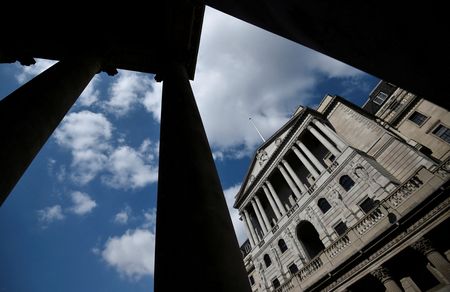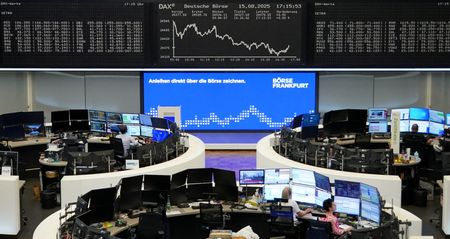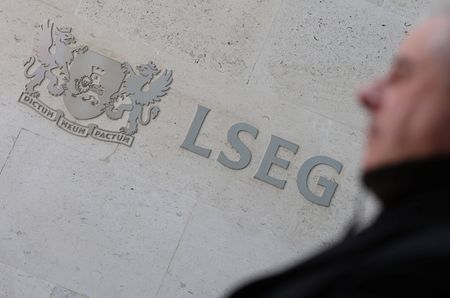By William Schomberg
LONDON (Reuters) – A flurry of often contradictory UK economic data and surveys this week has left the Bank of England none the wiser about whether Britain’s economy is more at risk of a wave of job losses or a new period of persistently high inflation.
A closely watched survey of businesses – the Purchasing Managers’ Index – suggested on Friday that firms this month cut staff at the fastest pace since the COVID pandemic, and almost as sharply as after the collapse of U.S. investment bank Lehman Brothers at the height of the global financial crisis in 2008.
Employers have been up in arms about an increase in the social security contributions that finance minister Rachel Reeves announced in October and which are due to start in April, at the same time as a nearly 7% rise in the minimum wage.
Several other surveys have pointed recently to companies making redundancies or choosing not to replace departing staff.
But data from a recruitment industry group also published on Friday showed the number of job postings rose for the first time in seven months in January, suggesting the jobs market might in fact be weathering the higher tax hit.
Earlier in the week, official figures showed the labour market held up better than expected at the end of 2024, while inflation in January came in stronger than forecast too.
In a sign of surprising strength among consumers, data on Friday showed retail sales volumes rose in January for the first time since last August, but another survey showed that weak consumer confidence improved only slightly.
Certainly, the economy looks to be on a stabler footing than when inflation peaked at 11.1% in October 2022, forcing the BoE to raise interest rates to their highest in 15 years which only added to squeeze on consumers and businesses.
‘STAGFLATION’ DILEMMA
But the often conflicting signals show why the central bank has said it will move only gradually and carefully with its next rate cuts after lowering them for only the third time since August this month.
“It all confirms this policy dilemma for the Bank of England and the stagflationary situation that the UK finds itself in,” Ross Walker, head of global economics at NatWest Markets, said.
It also creates a difficult picture for Reeves who may have to announce further public spending restraint or higher taxes next month if she is judged to be off course to meet the fiscal targets that she set herself less than four months ago.
Figures published on Friday showed weaker than expected tax revenues in January.
Britain’s economy barely grew in the second half of 2024 and the BoE recently halved its forecast for growth in 2025 to just 0.75%. But it also expects inflation to peak at 3.7% between July and September, up from 3.0% now, before falling back.
Some economists now think inflation could hit 4%, double the BoE’s target.
The slow-growth, sticky-inflation conundrum facing the BoE was highlighted by the PMI survey on Friday.
As well as cutting jobs, businesses said they were facing higher costs as suppliers jacked up their prices in anticipation of April’s higher social security costs and an increase in the minimum wage.
Rob Wood, chief UK economist at consultancy Pantheon Macroeconomics, said the BoE might take some comfort from signs in the PMI that services firms were absorbing some of their higher costs rather than passing them on via higher prices, but history suggested they would try to rebuild their margins soon.
“All told, the Monetary Policy Committee will have to be cautious as the employment balance looks too catastrophic to be plausible while price balances look too plausible to be ignored given the strong labour cost pressures coming down the line,” Wood said in a note to clients.
(Writing by William Schomberg; Editing by Susan Fenton)











